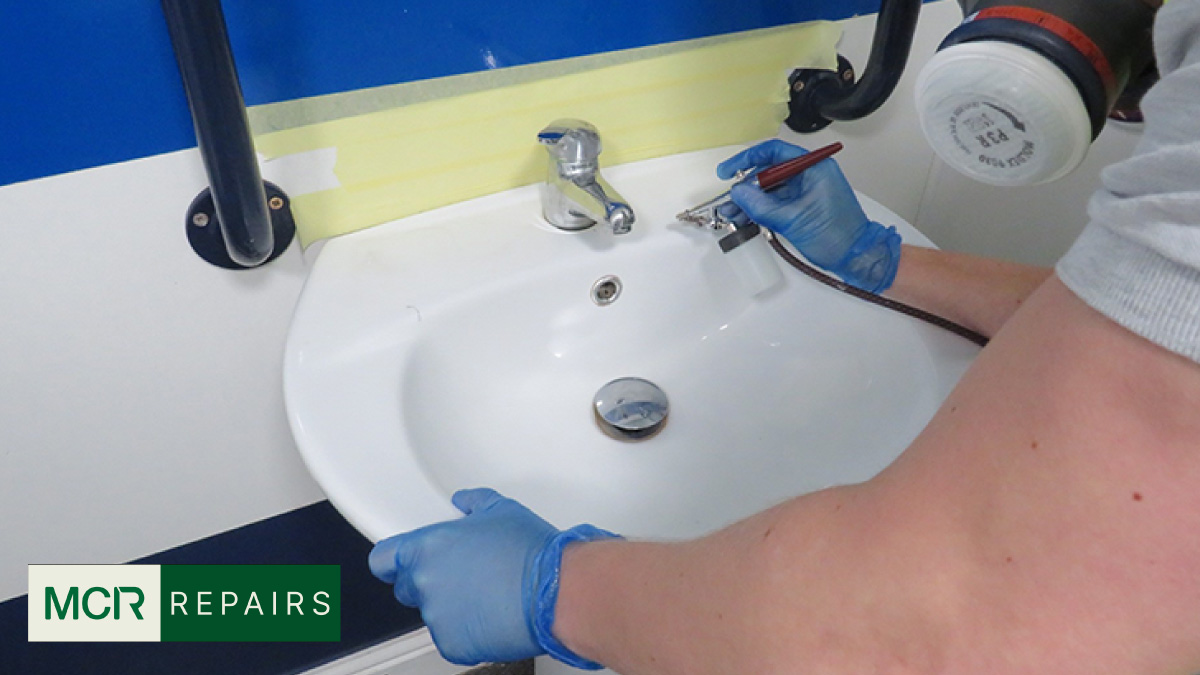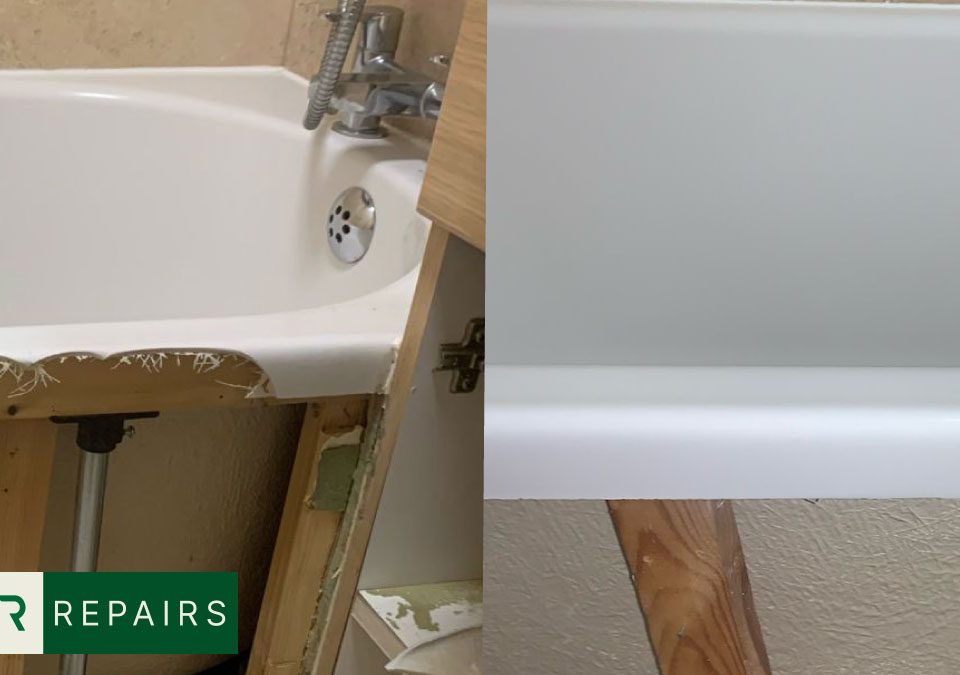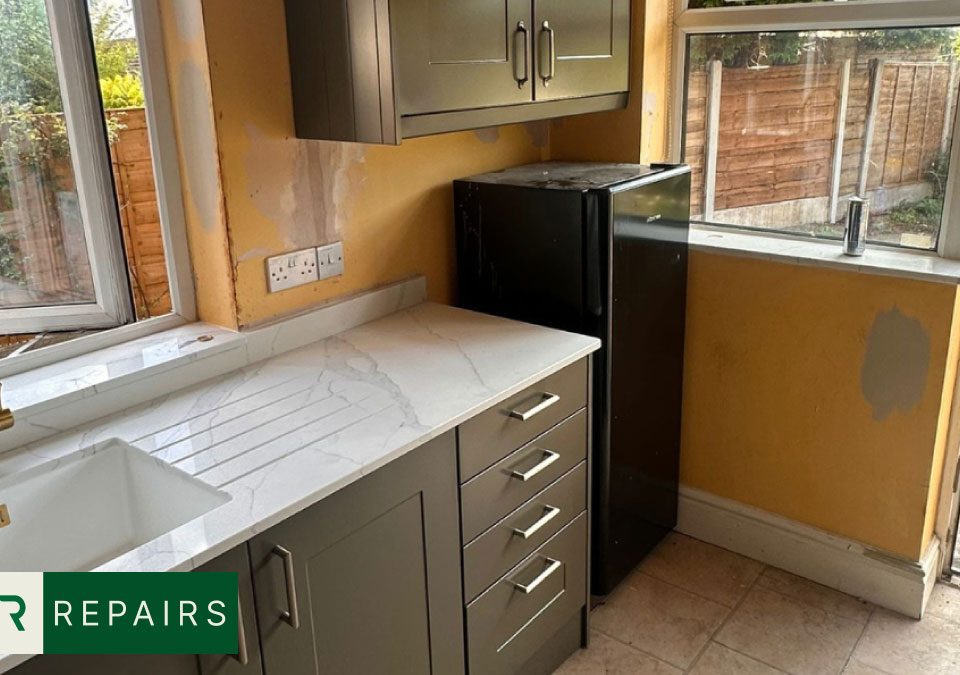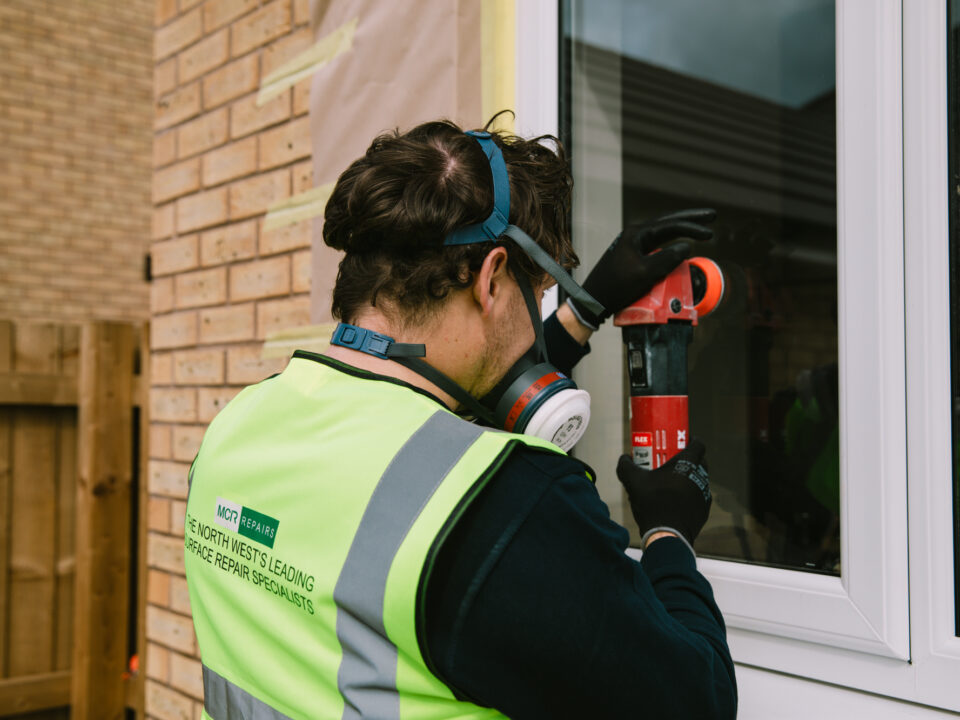Should you DIY a cracked sink repair or call in a professional? You’ve spotted a crack in your bathroom sink. Maybe it’s a hairline crack near the plughole, maybe something bigger. Now you’re wondering if you should grab a repair kit from the DIY store or call someone in to fix it properly.
We get asked about DIY sink repairs constantly. Sometimes a simple fix works perfectly. Other times, what starts as a quick DIY job turns into a bigger problem that costs more to put right.
Let’s walk through what you need to know about repairing cracked sinks, when DIY makes sense, and when it’s smarter to bring in an expert.
Cracked Sink Repair
Before we delve deeply into what you should do, let’s explore a few fundamental questions.
Can a Cracked Sink Actually be Repaired?
Yes, most cracked sinks can be repaired. Whether it’s ceramic with a hairline crack or resin chipped near the edge, we’ve been offering bath and sink repair services for residential and commercial properties across the North West.
The key is acting quickly. Small cracks spread over time. Water gets in, the crack widens, and a straightforward repair becomes a replacement job.
Modern repair materials bond incredibly well with ceramic, porcelain, and resin. When applied properly, repairs last for years and become invisible.
The catch is that “applied properly” part. Professional materials and techniques make the difference between repairs that hold up and ones that fail quickly.
What Causes Sink Cracks in the First Place?
Most cracks come from impact damage, like dropping something heavy into the basin. Hair straighteners, shampoo bottles, and even a soap dispenser falling at the wrong angle can chip or crack ceramic.
Temperature changes cause problems, too. Pouring boiling water into a cold sink creates thermal shock, especially with ceramic. The material expands too quickly, and cracks form.
Age also plays a role. Older sinks develop tiny stress fractures that aren’t visible until something triggers them to spread.
Knowing the cause helps you decide if DIY is sensible. A fresh impact crack might be manageable. An old sink with multiple stress fractures needs professional attention.

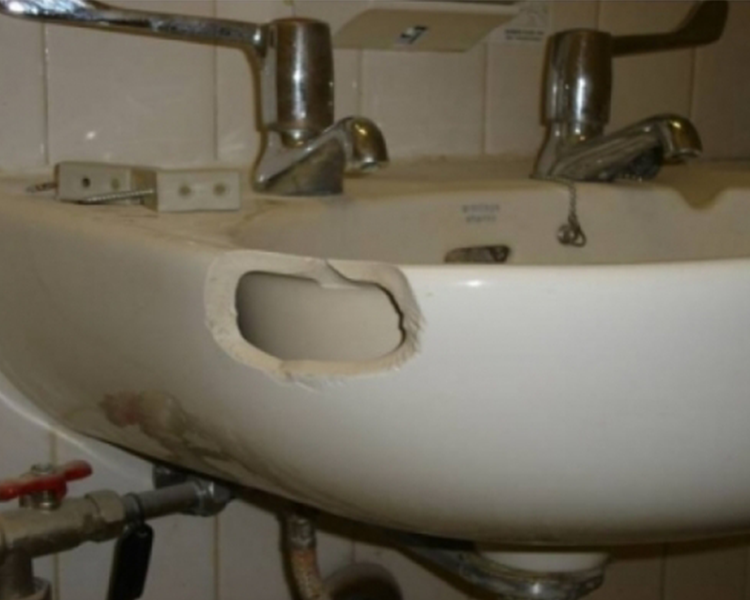
DIY Sink Crack Repair
Hardware shops sell sink repair kits promising professional results. Some work reasonably well for specific situations. Most don’t deliver what homeowners hope for.
DIY kits include epoxy filler and touch-up paint. Instructions make it sound simple: clean, mix, fill, smooth, cure. Job done.
Here’s what they don’t tell you. Epoxy needs perfect surface preparation. Any moisture, soap residue, or grease stops proper bonding. The repair might look fine initially, but it fails within weeks.
Colour matching is tricky. DIY kits come in generic white shades. Your sink probably isn’t that exact colour. The repair stands out once dry.
The finish is another challenge. Bathroom sinks have smooth, glossy surfaces. DIY fillers cure with matte finish or visible texture. It works functionally, but doesn’t look original.
Ultimately, for tiny hairline cracks where appearance isn’t critical, a repair kit might do the job. Just have realistic expectations.
When DIY Sink Repair Makes Sense
DIY is reasonable when the crack is genuinely tiny (under an inch), not near the plughole or edges, and appearance doesn’t matter much.
Surface scratches and minor chips sometimes respond well to repair compounds. These are cosmetic issues, not structural ones.
Guest bathroom sinks, where appearance matters less, are good candidates for DIY. Budget constraints sometimes make DIY the only option, buying you time until proper repair is affordable.
The biggest factor is your skill level. If you’re genuinely handy and have time to do it properly, DIY stands a better chance. Rushing through it rarely works out.
The Risks of DIY Sink Repairs Carry
The most common problem is repairs that don’t hold. The crack keeps spreading, or the filler comes loose. You’re back where you started, having wasted time and money.
Water damage is a real risk. If your repair doesn’t seal properly, water seeps into the cabinet below. By the time you notice, you’ve got mould or warped wood. That turns a £100 repair into a £500+ problem.
There’s also the risk of making the crack worse during repair attempts. Aggressive cleaning can extend the crack. We’ve seen half-inch cracks become three inches because someone scrubbed too hard.
Aesthetic disasters happen frequently. The repair looks terrible, and now you’re living with something worse than the original crack. Some homeowners pay for professional repair anyway, on top of DIY materials already spent.


Sink Repair Safety Considerations
DIY sink repairs involve more than just getting the job done. Safety matters too, both during the repair and afterwards.
● Chemical exposure: Many repair kits contain strong epoxies that need proper ventilation and can irritate skin
● Sharp edges: Cracked sinks often have sharp ceramic edges that can cut fingers during cleaning and prep work
● Improper curing: Rushed repairs that haven’t fully cured can crack under pressure, potentially causing injuries
● Water contamination: Failed seals let dirty water pool in cracks, creating conditions for bacterial growth that you can’t properly clean.
● Structural weakness: DIY repairs might hide damage without actually strengthening the sink, risking sudden breakage
Professional repairs eliminate these safety concerns. We use commercial-grade materials in controlled conditions, ensure proper curing times, and test structural integrity before we leave. Your sink isn’t just cosmetically fixed; it’s genuinely safe to use.
How Professional Cracked Sink Repair Works
When you call us, we start by properly assessing the damage. Not all cracks need the same fix.
Surface preparation is everything. We clean thoroughly, removing all soap, limescale, and oils. This takes longer than expected, but it’s why professional repairs last years instead of months.
We use professional-grade materials not available in shops. These compounds bond more strongly and withstand daily bathroom use far better than DIY alternatives.
Colour matching is where experience shows. We mix compounds to match your exact sink colour and replicate the surface finish. When we’re done, you can’t see where the repair was.
The repair process is methodical. We fill the crack in layers, allowing proper curing between applications. Rushing this stage is where most DIY repairs fail.
Finally, we seal and finish to match the surrounding surface, recreating the glossy finish that makes our ceramic repairs look as good as new, ensuring quality work for all our clients.
“I have used MCR on 2 separate occasions, and they have been brilliant both times. Professional and excellent quality work. As someone else has said – nothing seems too much trouble for them!” – R Chris
Cost Comparison: DIY vs Professional Sink Crack Repair
A basic sink repair kit costs £15-30. Seems cheap compared to calling a professional.
But if the DIY repair fails, you’ve wasted that money. Try again with better materials, that’s another £20-40. Those costs add up.
Professional sink crack repair typically costs £80-150, depending on damage and location. That includes materials, labour, travel, and warranty. It’s more upfront, but it’s a definite fix.
Compare that to sink replacement: new basin £100-300, plumber fees £150-300, plus potential tiling work. You’re looking at £400-800 total.
When you factor in your time and the risk of making things worse, professional repair is the sensible middle ground.
“Friendly service, fair prices, and nothing ever seems too much trouble for them.” – Oliver Rayner
Signs You Need Professional Help
Some situations aren’t suitable for DIY. If the crack is longer than two inches, don’t attempt DIY.
Larger cracks need structural repair techniques beyond what kits can handle. Cracks near the plughole or basin edges are structural weak points. Water pressure and daily use stress these areas. In this case, professional materials are needed to fix them.
Furthermore, multiple cracks suggest underlying issues. A professional can assess whether repair makes sense or replacement is smarter.
If water is actively leaking into the cabinet below, you need immediate professional attention to prevent serious water damage.
Finally, the main bathroom or kitchen sinks deserve professional attention. These are high-use areas that need a professional’s expertise.
What to Expect from Professional Sink Repair
When you book with us, we’ll ask for photos so we can give an accurate quote. No hidden fees, no surprises.
Most sink repairs take about two hours on-site. We bring everything needed, work cleanly, and leave your bathroom as we found it.
“Great speedy service fixing damage to a shower tray. Like new. Recommended.” – Marc Duschenes
The repair needs time to cure properly. We’ll tell you exactly when you can use the sink again. It’s usually within 24 hours.
All our repairs come with a warranty. If anything goes wrong with the repair itself, we’ll sort it. You’ll genuinely struggle to see where the crack was once we’re done. The repair blends perfectly with your sink’s original finish.
Still unsure? Contact us for honest feedback about whether DIY might work or if you need professional repair.
FAQs
Can a cracked sink be repaired?
Yes, most cracked sinks can be repaired effectively by qualified professionals. Modern compounds bond strongly with ceramic, porcelain, and resin.
What is the best sealant for a cracked sink?
Professional-grade epoxy compounds formulated for ceramic repairs work best. DIY options include marine-grade epoxy, but these rarely match professional materials. Silicone isn’t suitable for structural cracks.
How much does it cost to fix a crack in a sink?
Professional repair costs £80-150. DIY kits cost £15-40 but often fail. Sink replacement runs £400-800. Overall, professional repair is the most cost-effective option. You save more in the long run.
Can you fix a hairline crack in a ceramic sink?
Yes, hairline cracks are very repairable and the easiest type to fix. The crack is cleaned, filled with colour-matched compound, then finished to blend perfectly. Our repairs are virtually invisible.
Is a cracked sink a problem?
Yes, cracks let water seep into cabinets, causing mould and rot. Cracks spread gradually and harbour bacteria. Most are easily repairable if caught early.
How do you seal a cracked sink?
Clean thoroughly, fill with epoxy compound in layers, sand smooth when cured, then apply a matching topcoat. Professional repair ensures proper bonding and an invisible finish.

